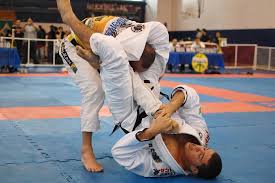Brazilian Jiu-Jitsu (BJJ) is renowned for its focus on submissions, a cornerstone of the art that allows practitioners to neutralize opponents through joint locks and chokes. Mastering submissions requires more than just technical skill; it demands a deep understanding of leverage, timing, and strategy. Whether you’re a novice or an advanced practitioner, refining your submission game can greatly enhance your performance on the mat. In this guide, we’ll explore essential BJJ training tips for mastering submissions, ensuring you make the most of your practice and improve your effectiveness in both training and competition.
1. Understand the Fundamentals of Submissions

Before diving into advanced techniques, it’s crucial to master the fundamental concepts of submissions. These include:
1.1. Leverage and Pressure
Understanding leverage is vital in BJJ. Submissions often rely on applying pressure at precise angles to force a tap. Focus on how to use your body weight and positioning to create effective pressure.
1.2. Proper Technique
Effective submissions are based on correct technique rather than brute strength. Learn the mechanics of each submission thoroughly and practice them regularly.
1.3. Body Mechanics
Efficient use of body mechanics, including alignment and balance, is key to successful submissions. Practice maintaining proper posture and positioning to improve your submission game.
2. Develop a Strong Foundation in Basic Submissions
To build a solid submission game, focus on mastering basic submissions. These include:
2.1. Rear Naked Choke (RNC)
The rear naked choke is a fundamental submission that requires proper positioning and technique. Practice the setup and execution repeatedly to make it second nature.
2.2. Armbar from Mount
The armbar from mount is a versatile submission that can be applied from various positions. Focus on the correct angle and control to execute this submission effectively.
2.3. Triangle Choke
The triangle choke is a powerful submission that involves using your legs to apply pressure to your opponent’s neck and arm. Practice transitioning into and maintaining the triangle to enhance your effectiveness.
2.4. Kimura Lock
The Kimura lock is a versatile submission that targets the shoulder joint. Practice the Kimura from different positions to increase your ability to apply it in various scenarios.
3. Master the Art of Setup and Transition
Successful submissions often rely on effective setups and transitions. Focus on:
3.1. Creating Opportunities
Learn to recognize and create opportunities for submissions during rolling. This involves understanding your opponent’s movements and exploiting openings.
3.2. Fluid Transitions
Practice transitioning smoothly between positions to set up submissions. For instance, transitioning from guard to mount or from side control to a submission position should be seamless.
3.3. Combining Submissions
Combine different submissions to create a dynamic and unpredictable game. For example, transitioning from an armbar to a triangle choke can keep your opponent off balance.
4. Drill, Drill, Drill
Repetition is key to mastering submissions. Incorporate the following drilling techniques into your training:
4.1. Solo Drills
Perform solo drills to improve your understanding of submission mechanics and body movements. Shadow grappling and technical flow drills can enhance muscle memory.
4.2. Partner Drills
Work with a training partner to drill submissions in a controlled environment. Focus on the details of technique and execution during these drills.
4.3. Live Sparring
Apply submissions in live sparring to test their effectiveness against resisting opponents. Analyze your performance and make adjustments based on feedback and observations.
5. Analyze and Adapt

Continuous improvement involves analyzing your performance and adapting your strategies. Consider:
5.1. Recording and Reviewing
Record your training sessions to review your technique and identify areas for improvement. Analyze your submission attempts and make adjustments as needed.
5.2. Seeking Feedback
Ask your coach and training partners for feedback on your submission game. Constructive criticism can provide valuable insights and help you refine your techniques.
5.3. Studying Advanced Techniques
Study advanced submission techniques and strategies through instructional videos, seminars, and expert advice. Incorporate new knowledge into your training to stay ahead of the curve.
6. Focus on Positional Awareness
Positional awareness is crucial for setting up and executing submissions. Pay attention to:
6.1. Control and Dominance
Establish control over your opponent before attempting a submission. Secure dominant positions such as mount, back control, or side control to increase your chances of success.
6.2. Adjusting Positioning
Be prepared to adjust your positioning to maintain control and create opportunities for submissions. Small adjustments can make a significant difference in the effectiveness of your submission.
7. Incorporate Strength and Conditioning
A well-rounded strength and conditioning program can enhance your submission game by improving overall fitness, flexibility, and power. Focus on:
7.1. Functional Strength
Develop functional strength through exercises that mimic BJJ movements. Core strength, grip strength, and overall body conditioning are essential for effective submissions.
7.2. Flexibility and Mobility
Incorporate flexibility and mobility exercises into your routine to enhance your range of motion and improve your ability to perform and escape from submissions.
8. Develop Mental Toughness
Mental toughness is crucial for success in BJJ, especially when it comes to executing submissions under pressure. Consider:
8.1. Visualization
Practice visualization techniques to mentally rehearse submission scenarios. Visualizing successful submissions can improve your confidence and performance on the mat.
8.2. Stress Management
Learn to manage stress and stay focused during training and competition. Effective stress management techniques, such as mindfulness and relaxation exercises, can enhance your performance.
9. Stay Consistent and Patient

Mastering submissions takes time and consistent effort. Stay patient and committed to your training, and remember that progress may come gradually.
9.1. Regular Training
Commit to regular training sessions to maintain and improve your submission skills. Consistent practice is key to achieving mastery.
9.2. Goal Setting
Set short-term and long-term goals for your submission game. Track your progress and celebrate your achievements to stay motivated.
10. Conclusion
Mastering submissions in BJJ requires a combination of technical skill, practice, and strategic thinking. By focusing on fundamental techniques, refining your setups and transitions, and incorporating drills and conditioning into your training, you can enhance your effectiveness and performance on the mat. Remember to stay patient, seek feedback, and continuously adapt your strategies. With dedication and perseverance, you can achieve mastery in submissions and elevate your BJJ game to new heights.



